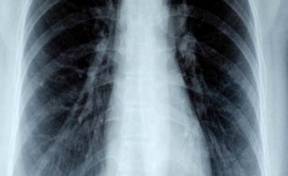
Microbicidal agent to reduce microbial resistance

Domaine Santé et Bien-être
Technologie Métaomique
Market
Applications
- Healthcare (catheters, prosthesis…)
- Consumer goods (toothpaste)
- Veterinary health
- Antimicrobial coating
- Disinfection
Challenges
Antibiotic resistance causes more than 1.2 million deaths worldwide each year. Designing next-generation antimicrobial agents that do not induce microbial resistance is a challenge. These agents are developed to limit the initial stages of adhesion, and to inhibit microbial growth to prevent infections.
Their application has raised concerns, however, both in terms of long-term efficacy and the potential for the emergence of multi-drug resistant microorganisms. Furthermore, these antimicrobial agents do not necessarily have microbicidal activity.
MARKET INTEREST
In 2023, the market interest has been confirmed by a complete survey of potential end-users with the following scores:
- Market need: 3.96/5
- Market relevance of the solution: 4.14/5
- Market acceptance of the solution: 3.67/5
Innovative solution
The solution is a patented bifunctional enzyme particularly interesting to fight against microbial resistance thanks to its strong microbicidal activity. This enzyme has a long-term efficacy and is easy to incorporate in an object or a formulation.
HOW IT WORKS
Microbicidal bifunctional enzyme with Myeloperoxydase and Glucose Oxidase activities.
Myeloperoxidase (MPO) belongs to the superfamily of heme-dependent peroxidases. This enzyme has an antimicrobial activity by its unique property of catalyzing the formation of hypochlorous acid from hydrogen peroxide and ions chlorides. Moreover, the MPO converts the classic substrates of peroxidases into radical intermediates.
The technology is based on the fusion of a glucose oxidase and a myeloperoxidase (MPO), assembled by a sequence of several amino acids. This sequence acts as a "linker", enabling the two enzymes, glucose oxidase and MPO, to connect. Together, they form what will later be called an artificial chimera, including:
- The glucose oxidase enzyme
- The peptide linker
- MPO enzyme
The research team developed microbicidal enzymes by formulating chimeric MPO enzymes that possess the dual function of H2O2 production coupled with the production of acid-type microbiocidal agents hypochlorous, hypothiocyanate, hypoiodate and hypobromate.
ADVANTAGES
- High stability
- No microbial resistance
- Chimeric enzyme: active with glucose and salts substrates
- Long life span (at least 1 month)
- Safety: avoids potential cytotoxicity of hydrogen peroxide which will be produced near to the active site and directly used by MPO
- Easy to use, compared to non-chimeric enzymes (such as mix)
Inventeurs
Developed by : Claire Stines-Chaumeil
CRPP (université de Bordeaux CNRS)
DEVELOPMENT STATUS : TRL 2/3
-
In-vitro bactericidal activity: on E. coli ATCC25922,
-
Production of active and microbicidal bifunctional enzyme
-
Several linkers have been tested and topology at low resolution or kinetic parameters have been tested.
To go further, the research team wants to fully characterize separate enzymes versus bifunctional enzyme from molecular point of view.
Propriété intellectuelle
1 Patent: EP22306877.6
“Artificial Bifunctional enzyme and applications thereof"
Contact
Christophe ZABAWINSKI
%63%2e%7a%61%62%61%77%69%6e%73%6b%69%40%61%73%74%2d%69%6e%6e%6f%76%61%74%69%6f%6e%73%2e%63%6f%6d
+33 (0)6 66 86 20 25



































